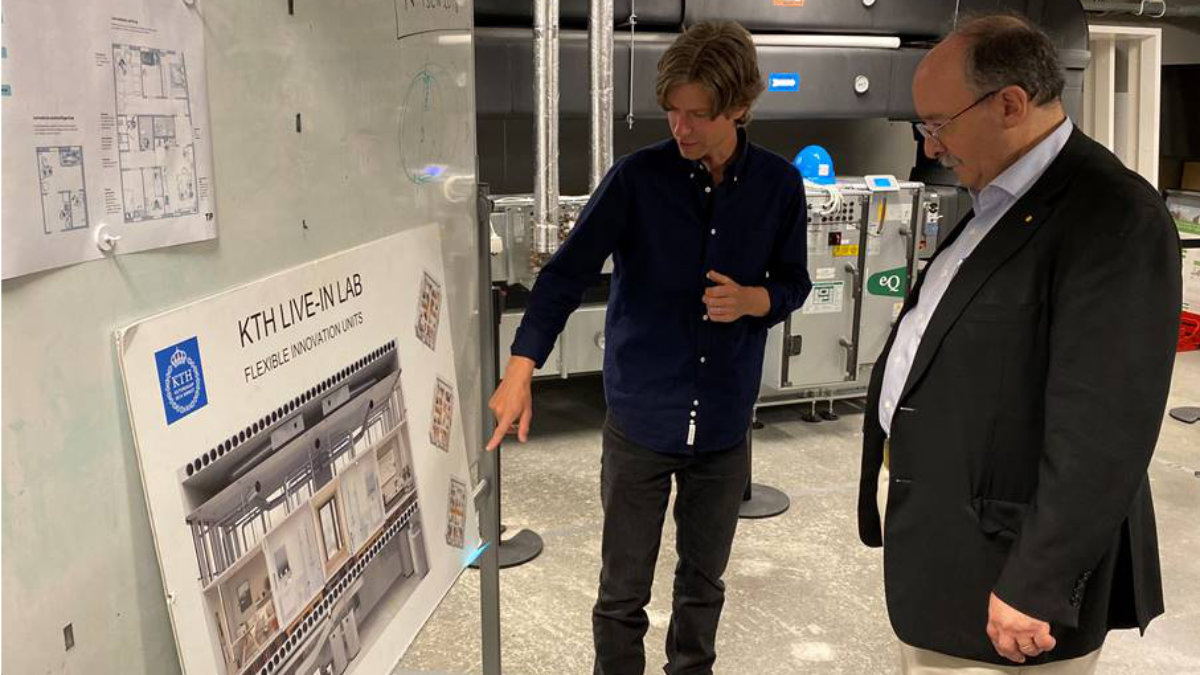Energy efficiency expert visits KTH Live-In Lab

Last week, KTH Live-In Lab was visited by physicist and energy efficiency expert Amory Lovins. During the visit, Amory Lovins and Jonas Anund Vogel, director of KTH Live-In Lab, discussed buildings and efficiency.
Before visiting KTH Live-In Lab, Amory Lovins held a lecture related to energy efficiency and the concept of integrative design at KTH. Integrative design is a concept where entire systems are optimized rather than single components within a system. This is done to increase the system’s end-use efficiency.
Learn more: Integrative Design: A Disruptive Source of Expanding Returns to Investments in Energy Efficiency - RMI
Using better components for increased efficency
During his visit to KTH Live-In Lab, Amory discussed the potential benefits of investing in high-quality, multi-use single components.
“By investing in the best components, you can make other traditional systems obsolete. For example, by adding better insulation, high performance windows, or through using state of the art heat recovery that build away almost all heating demand and hence reduce the cost for space heating. Maybe even reduce the need at all. The same idea goes for all systems,” says Amory Lovins.
Amory Lovins also discussed a recently published research paper describing the human tendency to add rather than remove things.
“We tend to like the idea of adding stuff, stuff that can do things for us, optimize things. Things that all lead to increased resource usage both during production and operation. These products tend to have shorter lifespans than most traditional systems and the material complexity is higher, hence the issues of separating materials on disposal”, he says.
Energy efficiency at KTH Live-In Lab
The work carried out within KTH Live-In Lab is often related to efficiency in one way or another. This work does however usually also entail adding things.
“Adding stuff is what we do at KTH Live-In Lab in nine out of ten cases. But the idea is in many cases to identify what we need, and what we do not need. An example of this is sensors. KTH Live-In Lab has worked with many types of sensors, but we have realized over time that only three sensors are essential. These sensors measure temperature, humidity and CO2. By adding another two sensors that measure LUX and VOC, most needs are covered when it comes to measuring and analyzing buildings,” says Jonas Anund Vogel.
If you are interested in Amory Lovins ideas about efficiency and wish to investigate project possibilities, do not hesitate sending in a project proposal to KTH Live-In Lab.
Learn more about collaborating with KTH Live-In Lab: www.liveinlab.kth.se/samverkan
